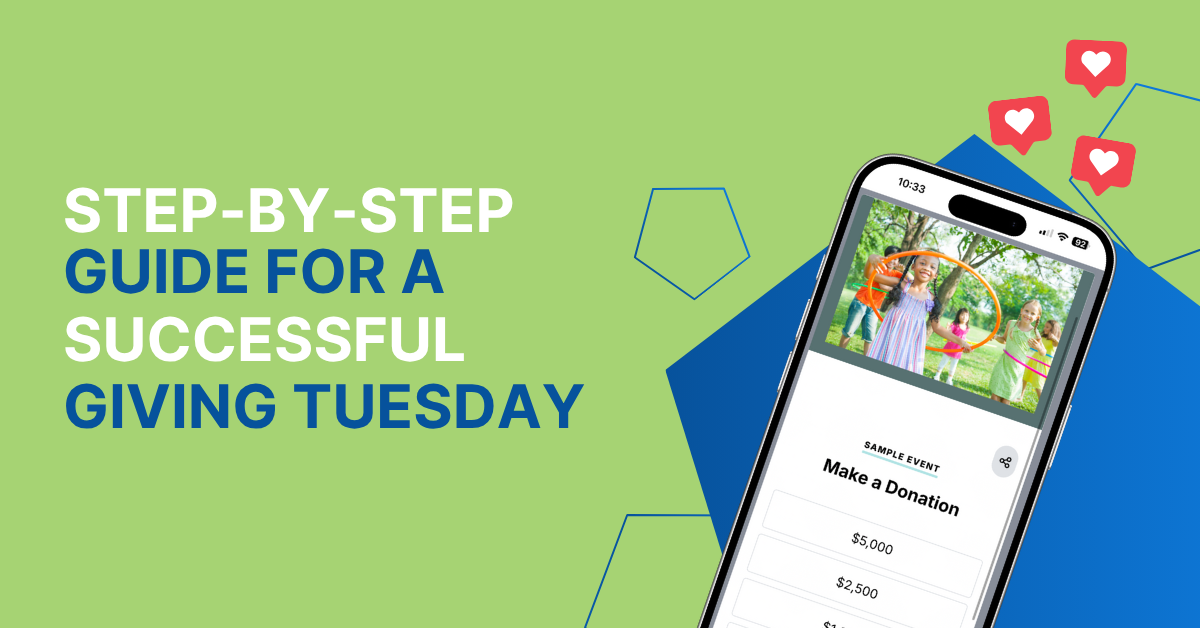
How to Leverage Donor Data to Maximize Your Relationships
May 16, 2022
As we move through the 2022 fundraising season, many nonprofits have continued their experiments with hybrid and virtual fundraisers. However, how can you be sure that these events are actually making a difference in your donor relationships? Your data is the answer and can effectively take these relationships to the next level.
Building valuable relationships with supporters takes time, but you can ensure that your team continually makes the right decisions to keep them on track by referencing your donor data. Your donor management software will play a vital role in collecting data, and strengthening relationships will heavily depend on your ability to make the most of that data.
To help you understand how your nonprofit can leverage your donor data to make significant improvements in donor relationships, this article will explore how to:
- Track donor journeys.
- Personalize messages.
- Create purchasable content, products, and services.
- Create engagement opportunities.
Remember that one of the benefits of using your data to improve your relationships with supporters is that if you’re ever unsure about your strategy, you always have your data to look to for guidance. And the more you interact with your supporters, the more data you will have to analyze.
Track donor journeys.
Maximizing your relationship with supporters requires understanding where they currently are in their donor journey and when the right to ask them to make the next step is. Of course, keeping track of every individual’s relationship with your nonprofit is only possible with the right software.
Your nonprofit’s donor management or CRM software should enable you to:
- Create donor profiles. When a donor first interacts with your nonprofit, your system should create a donor profile for them. This will then become your primary location for recording all of the data you collect, providing you with a central resource for all of your donors.
- Monitor where donors are in their journey. The right next step for each donor will depend on where they currently are in their donor journey. Throughout your relationship with supporters, your team will be able to refer back to their donor profile to help make decisions to increase the relationship’s value.
- Repeat the process. The donor journey should never really end. After your team successfully leads a donor all the way through their initial journey and your nonprofit receives a donation, your next steps will be to record their gift in their donor profile, thank them for their contribution, and consider your next steps for moving them toward their next donation.
EveryAction’s nonprofit software guide walks through several potential tools nonprofits can leverage to connect with donors, track their relationships, and generate reports about that data. Ensure all of the tools you add to your techstack are compatible with one another to keep data flowing smoothly from one solution to another or consider investing in an all-in-one solution to keep everything in one place.
Personalize messages.
Donors want to build relationships with organizations that genuinely value them. To do that, your nonprofit will need to understand each donor on an individual level, and routinely collecting and leveraging your donor data in communication is an effective way to accomplish that.
When reaching out to donors, leverage your donor management tools to personalize your messages as much as possible. Here are a few common ways nonprofits are able to connect with their supporters by tailoring their messages to each recipient:
- Address donors by their preferred name. Generic addresses (such as ‘Dear donor’ or ‘To whom it may concern’) rarely do more than show supporters an email is being sent en masse. Instead, ensure each of your messages addresses your supporters by name. This can go a long way toward encouraging them to open your messages and continue their relationship with your nonprofit.
- Use preferred communication channels. Some donors will prefer for your nonprofit to communicate with them via email, while others like the speed of text. Another group might even prefer social media messages. Ask early on in your engagement with supporters what communication channel they prefer you to use, and make an effort to always use that channel when reaching out to them.
- Only send relevant messages. Your nonprofit has a lot of information about your ongoing programs and fundraisers to share, but not all of it will be relevant to every supporter’s engagement. For example, supporters in their early 20s probably won’t be as interested in your planned giving program as your older supporters. By tailoring which messages you send to which supporters, you can increase your overall engagement rates and show supporters that your nonprofit continually has new and interesting activities that match their interests.
Personalizing messages will also apply to how your nonprofit makes requests for increases in donations. For example, if a donor is currently giving $100 annually, asking them to consider increasing their giving amount to $500 annually likely will not be as well received as a request to switch to $10 monthly.
Create purchasable content, products, and services.
While your first instinct to maximize supporter relationships might be to just consider how to increase their monthly donations, there are a few other ways your supporters can bring value to your organization. Specifically, take a look at your donor data and use it to consider how you can create new content that supporters will be interested in purchasing.
Depending on what they might find valuable, here are a few popular types of purchasable content and experiences you can consider offering your supporters:
- Merchandise. Branded t-shirts, hoodies, hats, water bottles, postcards, and tote bags are a staple of many nonprofit’s funding and marketing strategies. For one, selling merchandise creates another revenue stream for your nonprofit, but it goes beyond that. Supporters who buy merchandise with your nonprofit’s branding will be reminded of your organization every time they use it, potentially contributing to a more stable long-term relationship.
- Online courses. Are there any in-demand skills your nonprofit might be able to teach your supporters? If so, you can consider creating and selling online courses. These courses can teach a wide variety of skills from professional development essentials to how to set up a garden. While you should consult your donor data before launching any new program, be extra aware of it when developing your courses to ensure that you are creating courses with the skills your supporters are most interested in learning.
- Experiences. Some types of nonprofit organizations can successfully sell supporters tickets to experiences. Cultural organizations like museums have obvious experiences they can offer supporters, but other organizations can get creative as well with unique events that make the most of their location, resources, or simply their staff’s ability to put together an event with engaging activities.
To determine what type of content you should offer your supporters, look at your donor data. If you don’t already have significant numbers regarding how supporters feel about your nonprofit expanding its offerings, you can always send out surveys asking questions about what types of opportunities they would like to see from your organization.
Create engagement opportunities.
Imagine that you make a donation to two nonprofits. The first thanks you, and then asks for another donation. The second also thanks you, then encourages you to sign up for their newsletter, shares updates on the project you funded, and invites you to a series of events hosted in your community. For most donors, it’s far more likely they’ll form a relationship with the second nonprofit instead of the first.
You can strengthen your relationships with supporters by engaging them in a variety of opportunities outside of just donating. As you host these opportunities, you’ll be able to collect data on their overall performance, enabling you to further refine how you engage with supporters.
Here are a few ways you can connect with supporters based on their interests:
- Volunteering. Some nonprofits think of their volunteers and donors as separate groups, when, in reality, sometimes your best donors will also be volunteers and vice versa. Create volunteer opportunities based on what supporters have expressed interest in, and use your volunteer software to take note of which donors are participating.
- Events. Events are an opportunities to bring your supporters together and make one-on-one connections with your donors, while entertaining them with a few hours of fun. Choose what types of events to host based on your donors’ interests, demographics, and engagement trends. For example, if a significant portion of your supporter base consist of families, you might hold a kid-friendly event like a potluck or field day. Then, send out personalized event invitations that reference supporters’ past attendance or welcome them to their very first event based on their history.
- Virtual gatherings. Of course, while events are a great way to make face-to-face connections, you won’t always be able to meet with all of your donors in person. In addition to your in-person gatherings, host virtual events to bring your remote community together and also engage with those who simply prefer to attend from home.
Beyond these common opportunities, you can engage your supporters by helping them find new ways to give without requiring them to reach back into their pockets. For example, some of those donors who decide to try volunteering might work for a business with a volunteer grant program.
A variety of well-known companies such as Google, Disney, and Pfizer have volunteer grant programs. Help your supporters research their volunteer grant eligibility and how to apply for one with their employer.
The more you know about your donors, the more you’ll be able to connect with them. Collect data and put it to use by treating each supporter as a valuable individual contributor, giving them more ways to get involved, and always knowing where they are in their donor journey. Good luck!
Get The Latest Updates
Subscribe To Our Monthly Newsletter
No spam, notifications only about new products, updates.
Become a subscriber
Subscribe to our blog and get the latest updates straight to your inbox.

